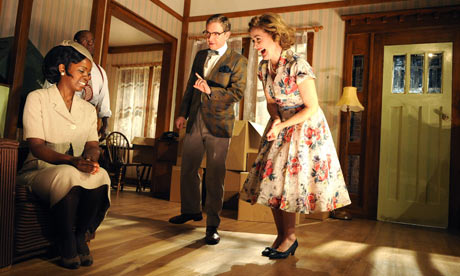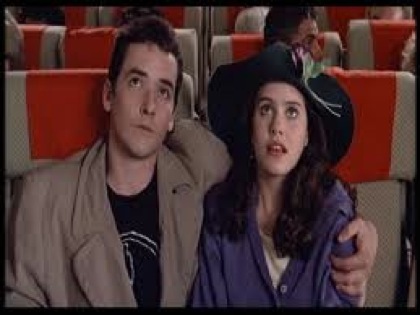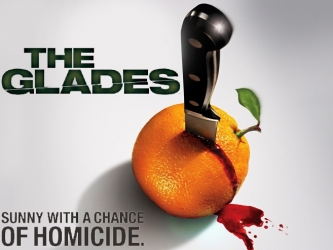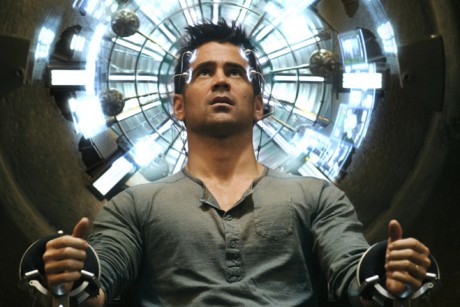Dialogue in a play is not like dialogue in life, with its artless jumbled ums and fits and starts. And it’s not discourse in smooth paragraphs of argument, either. It exists somewhere in the middle ground between those two extremes – crafted, stylized, cleaned up, with the playwright’s ideas and meaning slipped between lines of speech. And it’s not flawless communication. If Harry Potter went to Dumbledore some twenty pages in and was like, Hey I’m hearing snakey voices, do you know what might be up? then there would be no book. Miscommunication is sometimes the engine of action.
But when a play presents itself, to the audience and the world, as being about ideas, as trying to make you think about issues and problems in society, it helps if there is some semblance of discourse, if characters get to really say something. If arguments are also, once in a while, conversations.
The characters may not communicate effectively with each other, but perpendicular to their exchanges on stage, the playwright sends ideas and insights to the audience – the faltering lines back and forth on stage, and ideally something clearer from the stage to the seats.
***
Clybourne Park premiered off-Broadway at Playwrights Horizons in 2010, opening there to nearly universal rave reviews. (Its average score, as measured by the theatre review site StageGrade.com, was an exceptional A-, with barely a negative word to bring the average down.) Reviewers celebrated the play’s wit and humor, and hailed it as a brave and important contribution to difficult (and oft avoided) conversations about gentrification and race. When the play won the 2011 Pulitzer Prize for Drama, the Pulitzer jury called it “a powerful work whose memorable characters speak in witty and perceptive ways to America’s sometimes toxic struggle with race and class consciousness.” It opened on Broadway this past April, a coproduction of Playwrights Horizons and Lincoln Center Theater, with the cast of the 2010 off-Broadway run intact. In June it won the Tony Award for Best Play.

(l-r): Lorna Brown, Lucian Msamati, Martin Freeman and Sophie Thompson in Clybourne Park at the Royal Court. Photograph: Tristram Kenton
Clybourne Park takes an auspicious starting place for its leap into dangerous waters, jumping off from Loraine Hansbery’s classic play, A Raisin in the Sun. In Hansberry’s 1959 drama, the Youngers, a black family, struggle with the decision to move into a white neighborhood (the same Clybourne Park of Norris’ story). A future neighbor of theirs, Karl Linden, pays an ugly visit to the Youngers, attempting to dissuade them from moving, offering to buy them out at a considerable gain. Clybourne Park spends its first act in the 1959 home the Youngers have purchased. (This is signaled only through the presence of a Karl Linden who visits the outgoing homeowners to confront them about the undesirable family to whom their house has been sold. These references aren’t necessary to the play, and aren’t obvious to the average theatre-going adult if she hasn’t seen or read A Raisin in the Sun since it was assigned in tenth grade.) Russ and Bev are packing up to move out; Karl pays a visit (pregnant, deaf wife in tow) to make his case for the neighborhood’s, to his mind, preservation.
The second act takes place in the same house, but jumps to 2010, where we find Clybourne Park, the neighborhood, on the brink of a resurgence or recovery from decades of poverty and crime. This coincides, which is not to say it is a coincidence, with a white family moving into the neighborhood, and the second half of the play presents the contentious meeting between this white couple and the black couple representing the neighborhood Owners Association – the white couple plans to demolish the home from act I, now in disrepair, and build from scratch on the lot. (The same actors are in both acts, as different characters, sometimes in resonance across the act break and intervening years.) In each act, attempts at civil (i.e. coded) conversation falter and fail, tempers rise, and ugly feelings are revealed.
Revelation: ugly feelings exist.
Revelation: people have trouble talking about race.
Here is your Pulitzer for that.
***
Act I of Clybourne Park is funny – the whole play is funny – and moving, and the conversations people have are, for the most part, real. They feel realistic and something of substance is communicated – if the communication between characters is not always efficient, something is at least, most importantly, communicated to the audience. Perhaps the social mores of the Fifties help, the emphasis on civility that, for better or for worse, we’ve nowadays largely lost. Because the characters work so hard to be polite, there are actual conversations: the people involved each want something, and listen to – or at least hear – the other person’s point of view, and these points of view are communicated to the audience through gradual revelation that is tied to who the characters are as people. The dialogue is also artfully written, capturing the circuitous routes real conversations take, the false starts and interruptions. On the page and performed, it strikes the balance of real speech. The human struggle to communicate, and often the pathos of the failure to do so, is there.
Karl: Now, some would say change is inevitable. And I can support that, if it’s change for the
better. But I’ll tell you what I can’t support, and that’s disregarding the needs of the
people who live in a community.
Bev: But don’t they have needs, too?
Karl: Don’t who?
Bev: The family.
Karl: Which family?
Bev: The ones who-
Karl: The purchasers?
Bev: I mean, in, in, in, in principle, don’t we all deserve to – shouldn’t we all have the
opportunity to, to, to –
Karl: (chuckles with amazement, shakes his head) Well, Bev.
Jim: In principle, no question.
Karl: But you can’t live in a principle, can you? Gotta live in a house.
But even in the neighborly politeness of the 1950s, communication is interrupted, thwarted by the playwright’s hand. Bev is asking real, revealing questions that might lead somewhere? Karl says, “Darling, I came to talk to Russ.” And then Albert, the husband of Bev’s black maid, Francine, interrupts. And then Francine loses grip on the large footlocker she and Albert were moving, which falls thudding down the stairs into the living room scene.
Norris builds our anticipation by delaying resolution, but he does bring this conversation back around. With real live black folks in the room, Karl picks up his argument with a different tactic. He asks Francine if she would agree that “in the world, there exist certain differences.” (Polite and in her employer’s home, she demurs.) Karl asks if she would be able to find the foods her family enjoys at the neighborhood grocer’s. Albert shoots back, finally, “Do they carry collards and pig feet?” But no one else wants to confront the issue. (And the audience already knows what the issue is.) Karl goes on, politely, concerned for the family that would be different moving in – differences in worship, in recreation (“Do you ski?”), all rude and racist things to say but not anything I’m shocked to hear from a white man in 1959. Russ asks him to leave, Karl does not listen. Russ says, “Truck’s coming on Monday,” Karl presses on. And on and on and on.
It turns out that Russ and Bev’s backstory, which enables Russ to finally make Karl shut up, dramatically undermines the universality of their story. For all that the scenario follows the outlines of white flight, the specific tragic past that Norris has written for Russ and Bev weakens the connection to the issues he is trying to attack. It also provides a convenient explanation for the lack of a nearby white buyer, and for cheap sale price of the house, cheap enough for an upward-moving black family to be able to afford to move in: Russ and Bev’s son hanged himself in his bedroom, months after his return from fighting in the Korea War. As Michael Feingold wrote in The Village Voice, “the painful drama underlying Clybourne Park, often quite moving, is irrelevant to Norris’s satiric generalization; White families in the 1950s didn’t flee the inner city in large numbers because they were afflicted by tragedy, but because they wanted their kids to grow up in the suburbs. Affluence and a hunger for the new drove them out not their neighbors’ cold hearts.” So when Russ finally drives Kurt out of his home (and drives Bev to hysterical tears) by beginning to read from his son’s suicide note – Kurt, after so much refusal to listen to Russ, leaves because he refuses to listen to this – the emotional impact is powerful, but the ideological conversation has been abandoned altogether.
One would hope that that’s what second acts are for, continuation and further development of themes introduced in first acts, building tension, climax, and resolution. It may be old fashioned, by a factor of several millennia, but Aristotle is still the gold standard, and his gold standard for dramatic plot hinges on Reversal and Recognition. Something changes; something is discovered or revealed – these are the engine of satisfying dramatic action. Aristotle also describes a third aspect of Plot, the Scene of Suffering: “a destructive or painful action.” I don’t think this is the model for the second act of Clybourne Park, but it’s the closest structural analog I can find.
***
If I may pick and choose my Aristotelian conventions, I will not object to the violation of Unity of Time that jumps us, in act II, ahead fifty years to 2009. (That any theatrical principles have proved immutable over 2300 years is extraordinary; to expect all Aristotelian principles to remain equally ageless would be greedy.) It happens that Unity of Time is out the window, but Unity of Place is well preserved – we’re in the same Chicago neighborhood, in the very same house. The years show. There is graffiti under the stairs. The house’s destruction is imminent. (The mention of a koi pond among the new construction plans is meant to signal to us exactly what sort of structure the new building will be. The play communicates with its audience in code, just as the characters do with each other. A Whole Foods will be mentioned later on.)
And so the black community members, represented by a white lawyer, and the white couple represented by another white lawyer, bicker and passive-aggressively dance around issues of history and community and heritage. They go from trying to be polite to abandoning that attempt, but still nothing actually gets said. No substantial feelings or fears or desires are discovered or revealed. No one realizes or learns anything, on stage or in the audience. And then there’s some shouting and the play is over.
Both times I saw this play – in previews at Playwrights Horizons and on Broadway – the audience was with the play the whole way through. But I was angry. I was angry because it is frustrating to watch an hour-long frustrating and unproductive argument. And I was angry because this play had convinced so many people that they had just witnessed – taken part in, by witnessing – a real and important conversation about important and difficult issues. All that is actually said, though, all the audience is made to confront, is along the lines of, How ’bout gentrification? Gets people real riled up.
In a 2011 piece in The Evening Standard, Norris is quoted as saying that he wants audiences to walk into the theatre “and feel that something dangerous is happening,” and Clybourne Park cultivates this effect. People say racially charged things and well-meaning white liberals reveal themselves to be not quite as pure as they’d like to think – in act II, Lindsey employs that well-worn defense from (veiled, veiled) accusations of racism: “Half my friends are black!” But it is all an effect. Audiences feel that something dangerous is happening. But nothing ever is. It’s not that no one ever tries to defend herself with “Some of my best friends are black!” It’s that everyone defends themselves that way, and to put that chestnut on stage reveals nothing about how we think about race. A white man is nudged into telling a racist joke in front of black company; the black woman present responds with an even viler joke that turns the table on white women. The first is too long to relate, but hinges on prison rape and white men’s fear of black men’s sexuality; the second is: “What do a white woman and a tampon have in common? They’re both stuck up cunts.” And so a mostly white audience that has paid $50 or $80 or $110 per ticket hears a black woman say this, and yes, it feels dangerous. But look at the characters’ actual insights on gentrification and changing neighborhood demographics. Lena is one of the black representatives of the Owners Association. (This speech, in the play, is interrupted by several interjections.)
Lena: I have no way of knowing what sort of connection you have to the neighborhood where you grew up in? … And some of our concerns have to do with a particular period in history and the things that people experienced here in this community during that period… both good and bad, and on a personal level? I just have a lot of respect for the people who went through those experiences and still managed to carve out a life for themselves and create a community despite a whole lot of obstacles? Some of which still exist. That’s just a part of my history and my parents’ history – and honoring the connection to that history – and, no one, myself included, likes having to dictate what you can or can’t do with your own home, but there’s just a lot of pride, and a lot of memories in these houses, and for some of us, that connection still has value, if that makes any sense?
This speech not only fails to actually say anything about neighborhoods and their legacies – Norris has skilfully captured a very real way of talking so widely around a subject that even the hinted meanings are lost – but it also reveals nothing about Lena’s objections to a white couple moving into her neighborhood, which, for this play’s purpose, is a point of view the audience should be exposed to, should be made to understand.
Lena’s ends on the history and memory in the houses in the neighborhood. Although she is talking very widely around the topic of gentrification, it turns out to be surprisingly on-point, as the actual issue being debated in this act is how big a house the new residents can build on this lot. The plans have passed the Zoning Board, but the Owners Association has reservations – the house will be, they say, fifteen feet taller than the average height in the neighborhood. There is, of course, racial subtext – these white people coming in and building their big ostentatious house in this inexpensive but desirably located neighborhood, with their koi pond and their Whole Foods down the street. (If the Whole Foods predated the construction, how new can this gentrification be? And please, I call for a moratorium on using Whole Foods as symbol for yuppie gentrification and the butt of associated jokes. It’s just a supermarket.) But these construction plans are not only a pretense for the confrontation of the scene, they’re what the confrontation is actually about. Near the end of the play we get this:
Lindsey: Well, I want to say this: I want to say I feel angry. And I’m basically kind of hurt by the implication that’s been made that, just because we want to live as your neighbors and raise a child alongside yours, that somehow, in the process of doing that, we’ve had our ethics called into question. Because that is hurtful.
Lena: (calmly) No one has questioned your ethics at all.
Lindsey: Well, I wish I could believe you.
Lena: No, what we’re questioning is your taste.
Because it’s actually just about the stupid house.
This play wants us to think its about gentrification, but just as the first act pointed to white flight while really hinging on a particular and unique family tragedy, this act’s entire story and conflict and drama depend on the Owners Association not wanting the new family to build a big, ugly house. In between all that, the characters fight about race, and since a contentious issue is gestured at, well, that must be what this play is all about.
Norris may be trying to hold a mirror up to his audience’s well-meaning liberal hypocrisy but the characters are such huge jerks that it’s too easy to think not, “Oh my god, we do the same thing!” but rather, “Oh my god, look at those awful people!” The conversation feels dangerous, but looking at the people having it and gasping at their awfulness only makes the audience feel even more secure. The broad topic may be dangerous, but this play is entirely, one-hundred percent safe.
***
Clybourne Park has been produced at regional theatres around the country and in London. The New York Times wrote, “Every city has a Clybourne Park,” and this is probably true. Washington, DC has Petworth, London has Brixton, New York has, well, every neighborhood that’s marginally affordable. It has, among them, Inwood, the predominantly Dominican neighborhood at the northern tip of Manhattan that I moved to six years ago. As a single white person with minimal economic power, I am not a force of change. But add another white kid, add another, and when do we start adding up? More importantly, what does that mean? The questions that Clybourne Park fails to handle are questions I want to see discussed, because I am not enough of a conversation by myself.
In Eula Biss’ essay, “No Man’s Land,” the white residents of a “diverse” (i.e. predominantly not white) Chicago neighborhood talk of themselves as pioneers “lifting it up.” Biss and her husband, also white, move there for an inexpensive and spacious apartment near the lake, but they also appreciate (or fetishize) the diverse cultures they find around them. Her husband says, “I hope more white people don’t move here… kids were playing basketball by the school and they had cheerleaders cheering them on, and black men say hello to me on the street, and I love our little fruit market, and I don’t want this place to change.” The problem is that the change he is talking about is more white people moving in. He wants the number of white residents to be exactly enough to include him, but no more.
Biss and her husband, white writers taking advantage (not unfairly) of a neighborhood’s reputation – and perhaps its reality – to have a spacious home near a lakefront beach, want to opt out of the system they are inextricably a part of. I want to pretend that system doesn’t even exist.
I didn’t move to Inwood for culture or to pioneer, but because it was the only neighborhood in New York City where I could afford a one-bedroom and feel safe walking home from the subway at night. (What’s real and what’s imagined in perceptions of late-night safety is a question charged with racial subtext and gender dynamics but comes down to me trusting my probably prejudiced gut.) I am one white girl in a (miraculously rent-stabilized) apartment. Just as characters in Clybourne Park reassure themselves that the neighborhood they are invading was “originally” German and Irish, I try to understand things by reminding myself that, thirty years ago, Inwood was Irish and Jewish. But it isn’t now. I’m just living where I can afford to live. I try not to disturb anyone. I order dinner from the Venezuelan take-out in embarrassed Spanish. I don’t know how to think about it all correctly so for the most part I don’t think about it at all. Perhaps I’m being as unfair to my neighborhood as Biss’ husband is to their white neighbors, as wilfully blind as Lindsey and Steve in the second act of Clybourne Park. Does “I’m just living where I can afford to live” invalidate the community I’ve moved into? I just don’t know where else in the city I was supposed to go.
Biss describes a beautiful summer park full of Spanish-speaking families picnicking, Indian families playing cricket, and black teenagers lounging on benches; her landlord remarks, “The warm weather brings out the riff-raff.” Biss asks her husband to define gentrification. He replies, “It means that an area is generally improved, but in such a way that everything worthwhile about it is destroyed.”
There is a deep paradox in that definition. It is scarier than racist jokes.
There is one moment of real insight in Clybourne Park that is chilling. Toward the end of act I, Karl, the neighbor who is trying to stop a black family from moving to the neighborhood, explains his reasons:
Karl: I’m simply telling you what will happen, and it will happen as follows: First one family will leave, then another, and another, and each time they do, the values of these properties will decline, and once that process begins, once you break that egg, Bev, all the king’s horses, etcetera, and some of us, you see, those who don’t have the opportunity to simply pick up and move at the drop of a hat, then those folks are left holding the bag, and it’s a fairly worthless bag, at that point.
This is the one time in the play that a character expresses an unsavory opinion and cannot simply be laughed away, dismissed as ignorant or racist or nuts. Karl may be racist, he may be ignorant, but he also, if you take his logic as honesty, makes a point. And his prediction does come true. He’s right.
To let a character be insensitive, prejudiced, and right – that would challenge the audience, would force them out of their comfort zone. It would be a truly, wonderfully, dangerous act.
_________________
Jaime Green writes about science, food, and theatre, usually one at a time. Once upon a time she worked in new play development; now she is a graduate student in Columbia’s MFA program in nonfiction. Her website is here.







